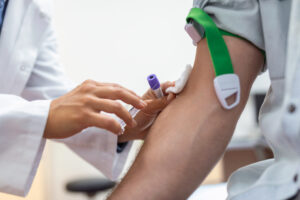Class Calendar | Call admissions on 415-943-2028
Get free phlebotomy training—exclusively for eligible Amazon Associates / Find MA training at BAMA
Class Calendar | Call admissions on 415-943-2028

Returning to the workforce after a career break can feel intimidating—but it’s also a chance to start fresh in a growing and meaningful field. If you’re considering healthcare, learning how to become a phlebotomist can open doors to a stable, hands-on career in just a few months.
Whether you took time off to raise a family, care for loved ones, or pursue other interests, phlebotomy offers a fast and practical way to reenter the job market with purpose and confidence.
Phlebotomists play a vital role in healthcare by collecting blood samples for testing, transfusions, research, and donations. With the rising demand for healthcare services, phlebotomy offers:
It’s an ideal path if you’re looking to reenter the workforce quickly while building long-term career potential.
Many people returning from a career break worry about having no medical background. The good news is, you don’t need it. Here’s how to become a phlebotomist, step by step:
Programs like BAMA Institute’s are designed for adults returning to work, with supportive instructors and flexible scheduling options.
When researching how to become a phlebotomist, it’s important to choose a program that prepares you for real-world success. Look for:
In California, for example, certified phlebotomy technicians must complete an approved training program and pass a state-recognized exam. Make sure the school you choose meets these requirements.
Returning to work after time away can feel overwhelming—but phlebotomy offers a clear, achievable path back into the workforce. By learning how to become a phlebotomist, you’ll gain in-demand skills, boost your confidence, and step into a career that truly makes a difference.
Ready to Get Started?
BAMA Institute’s Phlebotomy Program is built for adults looking to return to work with purpose. Whether you’re restarting your career or starting something entirely new, we’re here to support you every step of the way.
Contact BAMA Institute today to learn more about our phlebotomy training, class schedules, and how to enroll.
"*" indicates required fields
© 2024 BAMA Institute. All Rights Reserved. Website by WindsAndWater